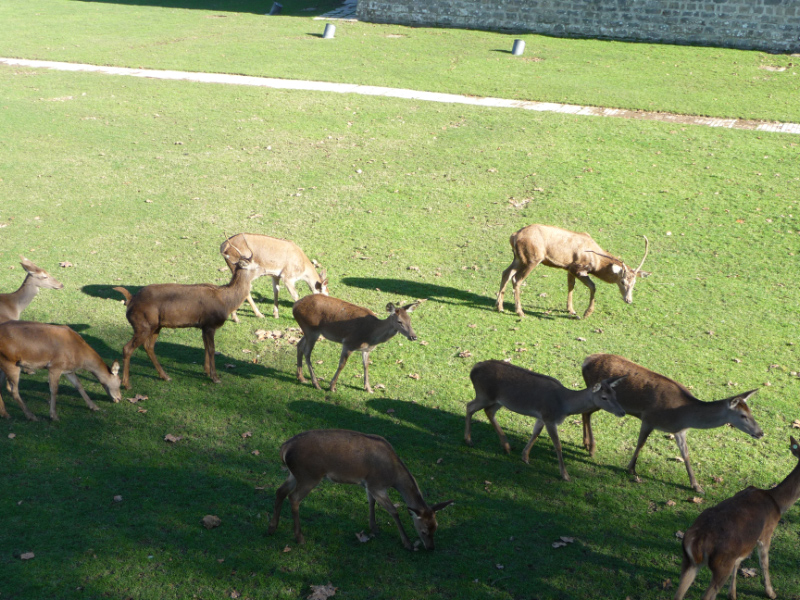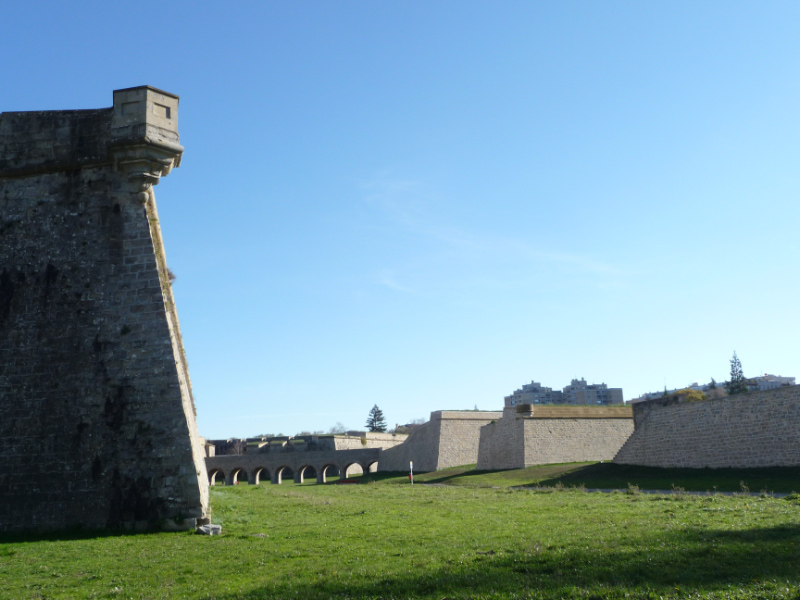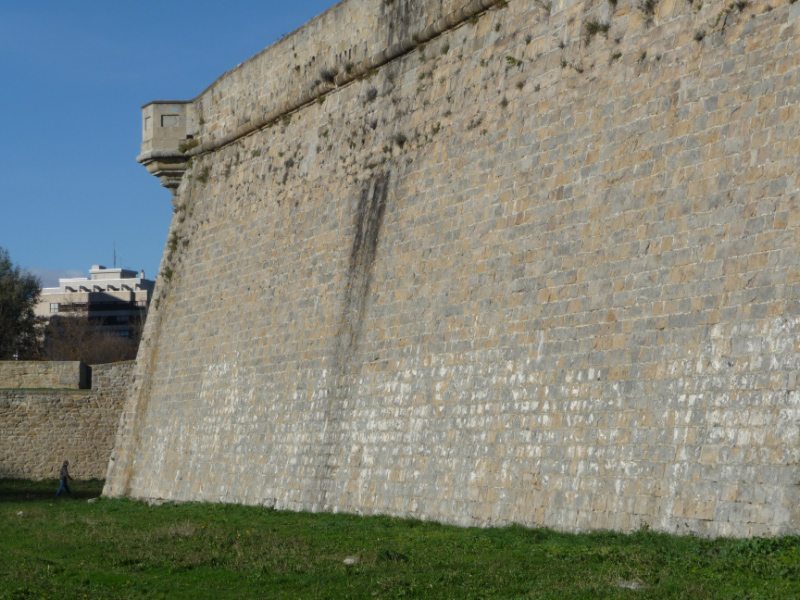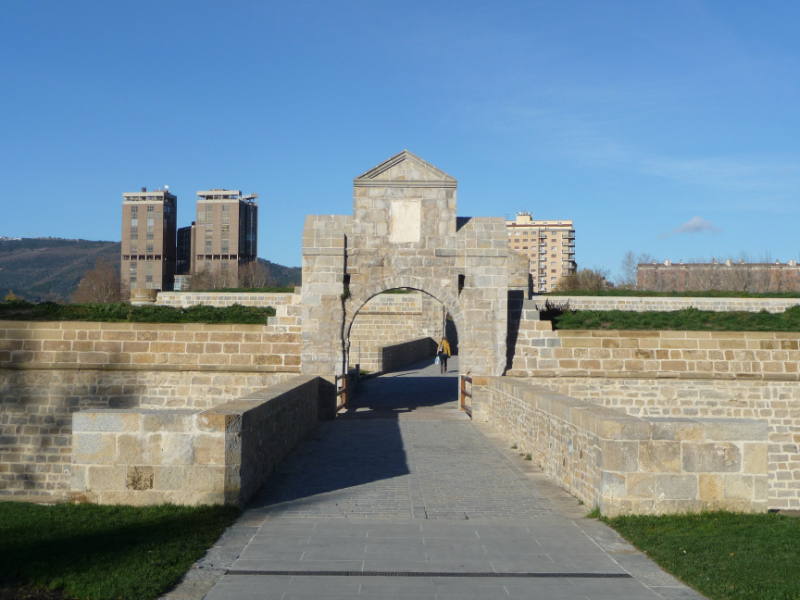We spent a weekend in Pamplona, an easy 3.5 hour train ride from Barcelona.
This is not the season of running the bulls (Encierro), but nonetheless the receptionist at our hotel pointed out all the danger spots during that festival, the fountain revellers jump off and kill themselves (they now dismount the fountain), the citadel where drunken revellers fall off the ramparts in the night and kill themselves (they now add a fence) and of course the inherent danger of not running as fast as the bulls, vividly shown in a massive statue in Ave de Roncevalles.
The sky was clear and temperatures hovering just above zero. Snow was on the hills. A car cry from the mild weather we are experiencing in Barcelona.
Pamplona was an important strategic outpost in defending the Iberian peninsula from France. The city wall that runs around the old city is impressive, tall and intact, however the citadel , built between 1571 and 1647, is the highlight. It is a five sided fortification designed by an Italian engineer and likened to a famous citadel in Antwerp (thinks… put that on my next must see list).
Adjoining the citadel is the Takonera Park built on the city walls. Golden autumn leaves were stunning in the beautiful formal gardens. The moat has been turned into a menagerie with all types of fowl including a solitary black swan, and a small herd of deer who entertained us from above.
The centre of town is small and quaint. A collection of north-south streets is given over in July to the very famous running of the bulls, ending at the Plaza de Toros (bull ring). Ernest Hemingway came to Pamplona in 1923 to report the San Fermi Festa, as a journalist for the Toronto Times. He fell in love with this area and returned eight times over the following years to record and write about the festival, most famously in “The Sun Also Rises”. He is so well recognised locally for raising the profile of this area that there is even a tour dedicated to his favourite hangouts and locations made real in his books.
As well as bulls, Pamplona is ooh he most important route of the Santiago de Compostala Camino or Pilgim’s Way. After crossing the MGdalena bridge and entering through the old city gate, the path traverses the old city in an east-west direction, and the city has many hostels that offer accommodation to the pilgrims. In fact the pilgrim’s way is recognised as bringing economic, religious and social. Lim to the region’s towns and cities in the Middle Ages.
Our chief guide, the receptionist at Hotel Zenit, explained that the locals meet and eat tapas at 1pm before lunch and at 6pm before shopping. It was an easy habit to adopt. In Pmplona they serve larger morsels, the sort that can’t possibly stay on the toasted bread unless you perform acro attic feats whilst eating them. They are also warmed (surely not in Summer) before they are served to you, welcoming in the cold weather.
e_header.jpg)







































